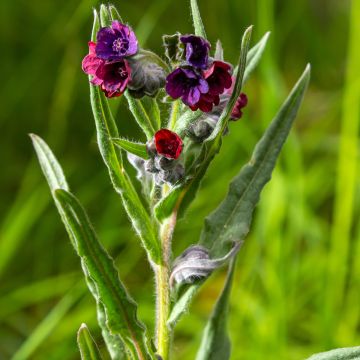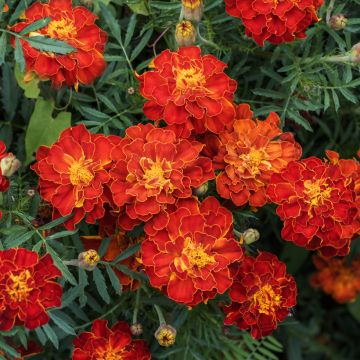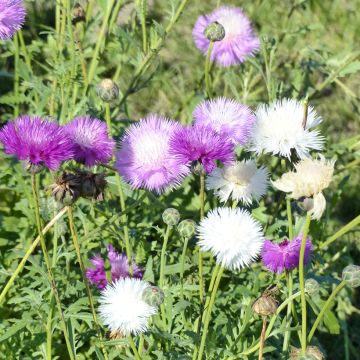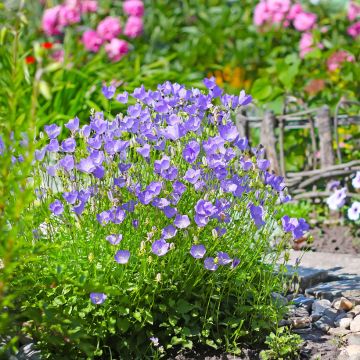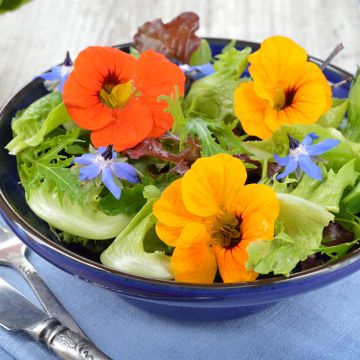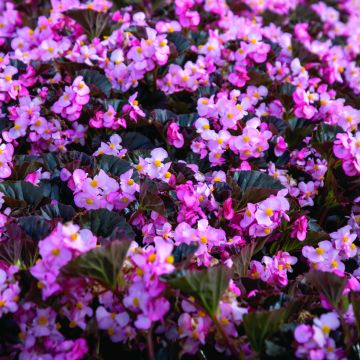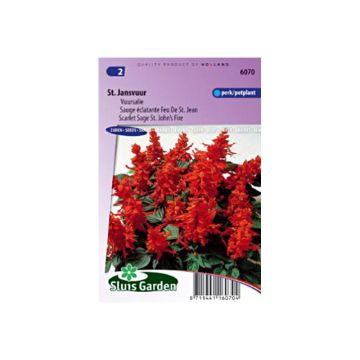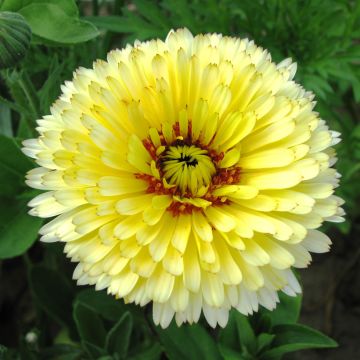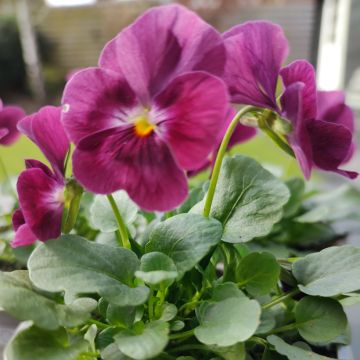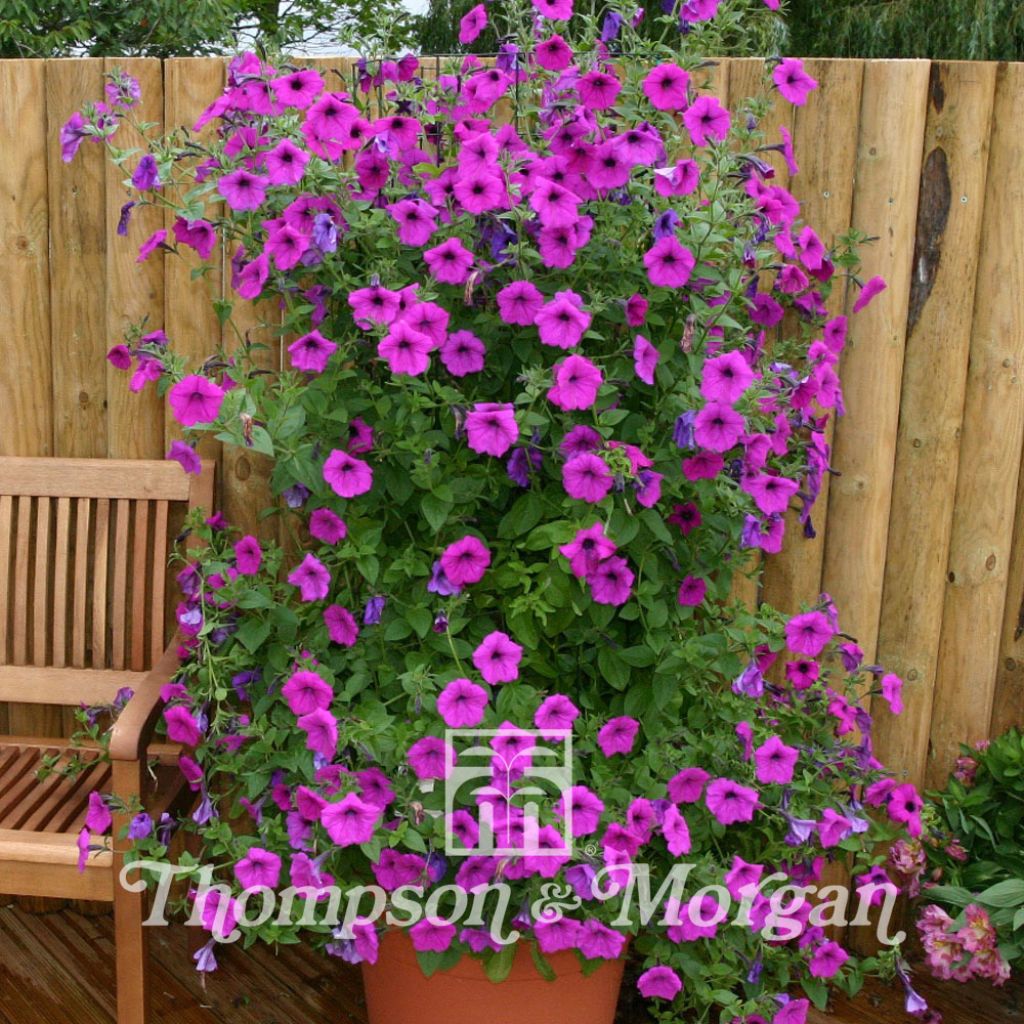

Petunia Purple Tower F1 Hybrid Seeds
Petunia Purple Tower F1 Hybrid Seeds
Petunia x hybrida Purple Tower
Petunia
I love climbing petunias, they are magnificent. I wanted to plant them as a hedge. For next year, I would like to have them in pots, if possible. Thank you.
Laurence F., 19/07/2020
This plant carries a 6 months recovery warranty
More information
We guarantee the quality of our plants for a full growing cycle, and will replace at our expense any plant that fails to recover under normal climatic and planting conditions.
Seed-only orders are dispatched by sealed envelope. The delivery charge for seed-only orders is €3.90.
Does this plant fit my garden?
Set up your Plantfit profile →
Description
Petunia Purple Tower is a variety of climbing petunia which covers itself with a profusion of bright flowers of a beautiful shade of purplish pink from June to the first frosts and produces long, vigorous stems, capable of scaling a 120 cm climbing frame. As beautiful on the balcony as in the garden, within a flowerbed or as a ground cover.
This much appreciated plant is of great ornamental value and owes its success as much to the generosity of its blooms as to the lengthiness of its flowering period.
Petunia Purple Tower has a climbing habit. Use it as a focal point and place it in the garden or on the patio, on a climbing frame that it will cover for the summer. You can also let it spread freely within a flowerbed. It will work wonders on its own or accompanied by other annual climbers such as cup and saucer vine or morning glory.
Petunia, or Petunia x hybrida, is native to South America and belongs to the Solanaceae family (like ornamental tobacco but also like... potato!). It is an annual herbaceous plant. It bears charming bell-shaped flowers on stems that lengthen over time and whose size and colour vary according to the variety. The leaves are slightly pubescent, smooth edged and dark green. Flowering starts in June and lasts until the first frosts.
Petunia thrives in sunny spots, sheltered from the wind. Place it in rich, light and well-drained soil or substrate. It is easy to grow but it requires a lot of water.
To encourage and sustain its long flowering period, faded flowers should be removed regularly and a potassium-rich fertilizer should be applied, especially when planted in pots and window-boxes, which will promote the appearance of new flowers.
Warning: seeds are best meant for very experienced gardeners who are used to sowing very fine seeds. These seeds are as fine as dust and are hardly visible to the naked eye.
Report an error about the product description
Flowering
Foliage
Plant habit
Botanical data
Petunia
x hybrida
Purple Tower
Solanaceae
Petunia
Cultivar or hybrid
Other Thompson and Morgan seeds
Planting and care
Sow petunias from February to April on the surface of a good seed starting mix, pressing them gently into the soil. Cover the seeds lightly with a thin layer of vermiculite or sifted compost. Place the seed tray in a propagator (or seal within a polyethylene bag) or place above a heater at a temperature of 21 to 25 °C. Keep the soil moist but not soggy. Light facilitates germination which usually takes 10 to 21 days.
When the young petunia plants are large enough to be handled, proceed with transplanting. Gradually acclimatize the plants to cooler conditions until they are strong enough to be planted out. After all risk of frost has passed, transplant into well-drained soil at a distance of 30 cm or grow them in pots or window-boxes.
Sowing period
Intended location
-
, onOrder confirmed
Reply from on Promesse de fleurs
Flower seeds
Haven't found what you were looking for?
Hardiness is the lowest winter temperature a plant can endure without suffering serious damage or even dying. However, hardiness is affected by location (a sheltered area, such as a patio), protection (winter cover) and soil type (hardiness is improved by well-drained soil).

Photo Sharing Terms & Conditions
In order to encourage gardeners to interact and share their experiences, Promesse de fleurs offers various media enabling content to be uploaded onto its Site - in particular via the ‘Photo sharing’ module.
The User agrees to refrain from:
- Posting any content that is illegal, prejudicial, insulting, racist, inciteful to hatred, revisionist, contrary to public decency, that infringes on privacy or on the privacy rights of third parties, in particular the publicity rights of persons and goods, intellectual property rights, or the right to privacy.
- Submitting content on behalf of a third party;
- Impersonate the identity of a third party and/or publish any personal information about a third party;
In general, the User undertakes to refrain from any unethical behaviour.
All Content (in particular text, comments, files, images, photos, videos, creative works, etc.), which may be subject to property or intellectual property rights, image or other private rights, shall remain the property of the User, subject to the limited rights granted by the terms of the licence granted by Promesse de fleurs as stated below. Users are at liberty to publish or not to publish such Content on the Site, notably via the ‘Photo Sharing’ facility, and accept that this Content shall be made public and freely accessible, notably on the Internet.
Users further acknowledge, undertake to have ,and guarantee that they hold all necessary rights and permissions to publish such material on the Site, in particular with regard to the legislation in force pertaining to any privacy, property, intellectual property, image, or contractual rights, or rights of any other nature. By publishing such Content on the Site, Users acknowledge accepting full liability as publishers of the Content within the meaning of the law, and grant Promesse de fleurs, free of charge, an inclusive, worldwide licence for the said Content for the entire duration of its publication, including all reproduction, representation, up/downloading, displaying, performing, transmission, and storage rights.
Users also grant permission for their name to be linked to the Content and accept that this link may not always be made available.
By engaging in posting material, Users consent to their Content becoming automatically accessible on the Internet, in particular on other sites and/or blogs and/or web pages of the Promesse de fleurs site, including in particular social pages and the Promesse de fleurs catalogue.
Users may secure the removal of entrusted content free of charge by issuing a simple request via our contact form.
The flowering period indicated on our website applies to countries and regions located in USDA zone 8 (France, the United Kingdom, Ireland, the Netherlands, etc.)
It will vary according to where you live:
- In zones 9 to 10 (Italy, Spain, Greece, etc.), flowering will occur about 2 to 4 weeks earlier.
- In zones 6 to 7 (Germany, Poland, Slovenia, and lower mountainous regions), flowering will be delayed by 2 to 3 weeks.
- In zone 5 (Central Europe, Scandinavia), blooming will be delayed by 3 to 5 weeks.
In temperate climates, pruning of spring-flowering shrubs (forsythia, spireas, etc.) should be done just after flowering.
Pruning of summer-flowering shrubs (Indian Lilac, Perovskia, etc.) can be done in winter or spring.
In cold regions as well as with frost-sensitive plants, avoid pruning too early when severe frosts may still occur.
The planting period indicated on our website applies to countries and regions located in USDA zone 8 (France, United Kingdom, Ireland, Netherlands).
It will vary according to where you live:
- In Mediterranean zones (Marseille, Madrid, Milan, etc.), autumn and winter are the best planting periods.
- In continental zones (Strasbourg, Munich, Vienna, etc.), delay planting by 2 to 3 weeks in spring and bring it forward by 2 to 4 weeks in autumn.
- In mountainous regions (the Alps, Pyrenees, Carpathians, etc.), it is best to plant in late spring (May-June) or late summer (August-September).
The harvesting period indicated on our website applies to countries and regions in USDA zone 8 (France, England, Ireland, the Netherlands).
In colder areas (Scandinavia, Poland, Austria...) fruit and vegetable harvests are likely to be delayed by 3-4 weeks.
In warmer areas (Italy, Spain, Greece, etc.), harvesting will probably take place earlier, depending on weather conditions.
The sowing periods indicated on our website apply to countries and regions within USDA Zone 8 (France, UK, Ireland, Netherlands).
In colder areas (Scandinavia, Poland, Austria...), delay any outdoor sowing by 3-4 weeks, or sow under glass.
In warmer climes (Italy, Spain, Greece, etc.), bring outdoor sowing forward by a few weeks.



































